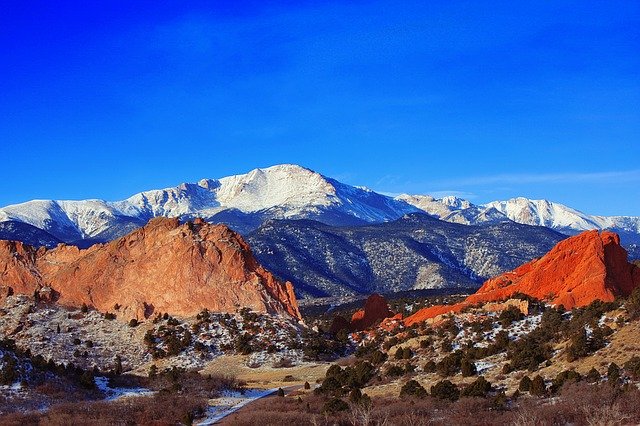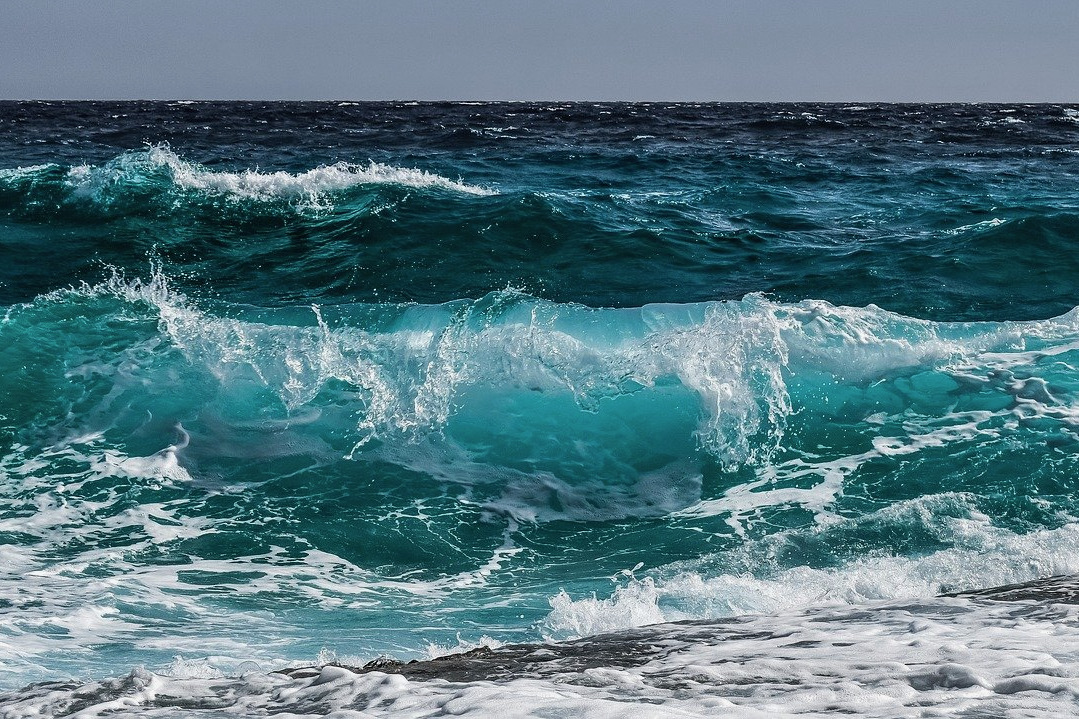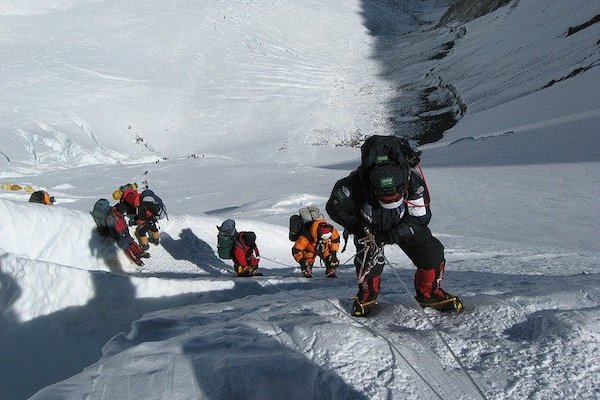COLORADO
Colorado Cornucopia
By Pierce, Landon, Finn, Hannah, Elian, Isa, Naomi and Tallie
Fifth Graders at Stanley British Primary School
Denver, CO, United States
THE STATUE OF LIBERTY
By Pierce
Legend has it that Frenchman Edouard de Laboulaye first came up with the idea for France to present a monument to the United States in 1865. He inspired his friend, a sculptor named Frederic Auguste Bartholdi, to design an enormous sculpture. Both French and US officials decided to name it Liberty Enlightening the World. They planned for the US to build the pedestal, because the French were to create the statue in France and then ship it across the ocean.
All was going well until they hit an obstacle on both sides: how to pay for it. France raised funds from a variety of sources, from schoolchildren to copper manufacturers. In the US, events, art exhibits, and auctions did not raise enough money. Poet Emma Lazarus wrote her famous sonnet, The New Colossus, in 1883, for the art and literary auction to raise money for the statue’s pedestal.
Back in France, Bartholi needed the help of an engineer to figure out how to support the 151-foot copper figure. He asked Alexandre Gustave Eiffel (who later built the Eiffel Tower) to design a framework. Eiffel used an innovative iron construction to help the skin of the statue resist cracking and stand upright.
Back in America, fundraising was moving quite slowly. Joseph Pulitzer, publisher of a newspaper called the New York World, criticized the rich who failed to give money for the pedestal, as well as the middle class who relied on the rich to give the money. After Pulitzer’s criticism, the money intake for the pedestal increased greatly.
Then came architect Richard Morris Hunt, who designed the statue’s concrete-and-granite pedestal. The cornerstone was laid in 1884. He donated his pay to fund the statue. Finally, after daily donation calls in Pulitzer’s paper, construction on the pedestal was finished in 1886.
The statue from France had already arrived by then. It was completed in July 1884 and came to New York in June 1885 on board the French boat Isere. It traveled in 214 crates holding 350 individual pieces. Lady Liberty was reassembled on her pedestal in four month’s time. To this day, she represents not only the generosity of France and the collaboration between the two countries, but also maybe a newfound friendship between France and the United States.

Blank
Blank
Math Questions
- If there are 350 pieces divided into 214 crates, on average how many pieces would be in each crate?
- How many years has it been since the statue was created?
- How long was it from the planned completion date to the actual completion date?
Share Your Story
Write your own Global Math Story and send it to us!
COLORADO FOURTEENERS
By Landon and Finn
In Colorado, there are many, many fourteeners (mountains with peaks higher than 14,000 feet). There are 91 fourteeners in the entire United States, and 56 are in Colorado. Because Colorado has so many fourteeners, it contains 75 percent of the land in the US with an altitude of over 14,000 feet.
The largest, Mount Elbert, stands 14,400 feet tall. The first person to summit Mount Elbert was Henry W Stuckle in 1874. The smallest is named Sunshine Peak and is 14,001 feet tall.
Pikes Peak is the first fourteener that you would encounter in Colorado if you were traveling west from the plains of Kansas. Pikes Peak is 14,115 feet tall. The first person who climbed it was explorer Zebulon Pike, who led an expedition there in 1806. His group failed to reach the summit because of deep snow and lack of food.
Pikes Peak came into existence around 50 million years ago and was formed by the erosion of molten rock. Pikes Peak has an old cog railway that you can ride to the summit in the summer.
Longs Peak is 14,259 feet tall and is one of the tallest in Colorado. It’s the only fourteener in Rocky Mountain National Park. An estimated 30,000 people climb it each year.

Blank
Blank
Math Questions
- What percentage of all the fourteeners in the US are in Colorado?
- If 156 people climb Longs Peak in a year, how many climb it each month?
- What is the elevation difference between the smallest peak (Sunshine Peak) and the largest peak (Mt Elbert)?
- What is the elevation difference between Longs Peak and Pikes Peak?
Share Your Story
Write your own Global Math Story and send it to us!
GIANT PANDAS
By Hannah
Have you heard that giant panda populations are endangered? If you haven’t, take notice. Pandas have been around for two or three million years. Long ago, when civilization started constructing roads and buildings, pandas started disappearing. Forest destruction reduced their numbers.
Giant pandas might not seem that important, but they are a crucial part of their ecosystem. They eat between 20 and 40 pounds of bamboo every day and spread seeds through their poop. Occasionally they eat other vegetation, fish or even small animals.
There are many interesting facts about pandas. Newborn pandas can be as small as a stick of butter. Sometimes pandas rest by doing handstands against trees.
You can help save panda populations by educating people about why pandas are important.

Blank
Blank
Math Questions
- There are 14 forests with an average of 112 giant pandas each. What is the total number of pandas?
- Due to habitat destruction, half of the pandas die. How many pandas are left?
- Conservation groups stop further destruction, so that eight baby pandas are born per forest. What is the total number of pandas now?
- If one panda eats 26 pounds of bamboo the first day, 32 pounds the second day, 22 on the third, 33 on the fourth and 36 on the fifth, what is the average number of pounds the panda eats per day?
Share Your Story
Write your own Global Math Story and send it to us!
THE HARM DONE TO THE OCEAN
By Elian
This is my math story about radioactive waste. I’m writing this because of all the wildlife that lives in the ocean. Between 1946 and 1993, 13 countries dumped toxic waste into the ocean. Since 1993, most dump locations have been removed and guarded to protect the ocean because of laws, country treaties and governments.
The existing toxic waste is circulating throughout the ocean and affecting life in places where it has been dumped. Some of them are in the Atlantic Ocean near Europe and parts of the US. This is a threat to human health, because when you eat fish from the toxic water you risk injury to your organs if you eat a lot.
The radioactive waste in the oceans hurts fishermen’s jobs, because they can’t sell toxic fish to markets. For example, after the 2011 Fukushima disaster, many countries banned seafood from this area along the coast of Japan. The average salary range of a deep sea fisherman is $27,110 to $42,960 in one year.
The country known as the highest dumper is the Soviet Union with 38,369 units of radioactivity in the Arctic Ocean and 874 in the Pacific Ocean. Some of the least are Germany and Italy with 0.2 pounds each in the Atlantic. South Korea is known to have dumped waste in the Sea of Japan but there is no data on how much.

Blank
Blank
Math Questions
-
For how many years did countries dump waste?
-
What is the total amount of toxic waste in the ocean from the countries listed?
-
Given the lowest and highest salary, what is the average of those two numbers?
Share Your Story
Write your own Global Math Story and send it to us!
MOUNT EVEREST
By Isa and Naomi
Mount Everest is the tallest mountain ever. It stands at either 29,029 or 29,035 feet above sea level, depending on which measurement you trust more. By the end of the 2018 season, 4,883 climbers had summited Mount Everest.
- Basecamp stands at 17,598 feet
- Camp 1 stands at 19,501 feet
- Camp 2 stands at 20,997 feet
- Camp 3 stands at 23,500 feet
- Camp 4 stands at 26,299 feet
What is known as the death zone is above 26,000 feet. If you were to climb there you would definitely want to hire a guide. On Mount Everest, there are many ways to die. Some of them include acute mountain sickness, exposure, exhaustion, falling, and avalanche.

Blank
Blank
Math Questions
- If 297 people have died on Mt Everest, and 46 bodies have been retrieved, how many bodies are left there?
- What is the elevation difference between base camp and the summit?
Share Your Story
Write your own Global Math Story and send it to us!
BATS
By Tallie
Whether cute and cuddly or scary and revolting, they’re all bats, and their population is decreasing. Bats live in rainforests, farmland, woods and cities. There are 1,240 bat species in the world. Of those, 104 are endangered and 24 species are vulnerable. Some examples of endangered species are
- flying foxes
- Townsend’s big-eared bat
- Indiana bat
- gray bat
Some bats are endangered by humans invading their space and/or cutting down trees.

Blank
Blank
Math Questions
- What is the total number of endangered and vulnerable species? How many are healthy?
- In fraction form, how do you write the number of endangered and vulnerable species out of the total number of bat species? How do you write this as a percentage?
Share Your Story
Write your own Global Math Story and send it to us!
Sorry, the comment form is closed at this time.